Two spherical cavities of radii a and b are hollowed out from the interior of a neutral conducting sphere of radius R. At the center of each cavity , a point charge is placed . Call these charges qa and qb.
The electric field at a distance r outside the conductor is

A
14πε0qbr2
B
zero
C
14πε0qa+qbr2
D
14πε0qar2
Video Solution
Text Solution
The correct Answer is:C
i. σA=−qa4πa2,σB=−qb4πb2,σR=qa+qb4πR2
ii. E=14πε0qa+qbr2(Fig.S2.56)
iii. Ea=14πε0qar2
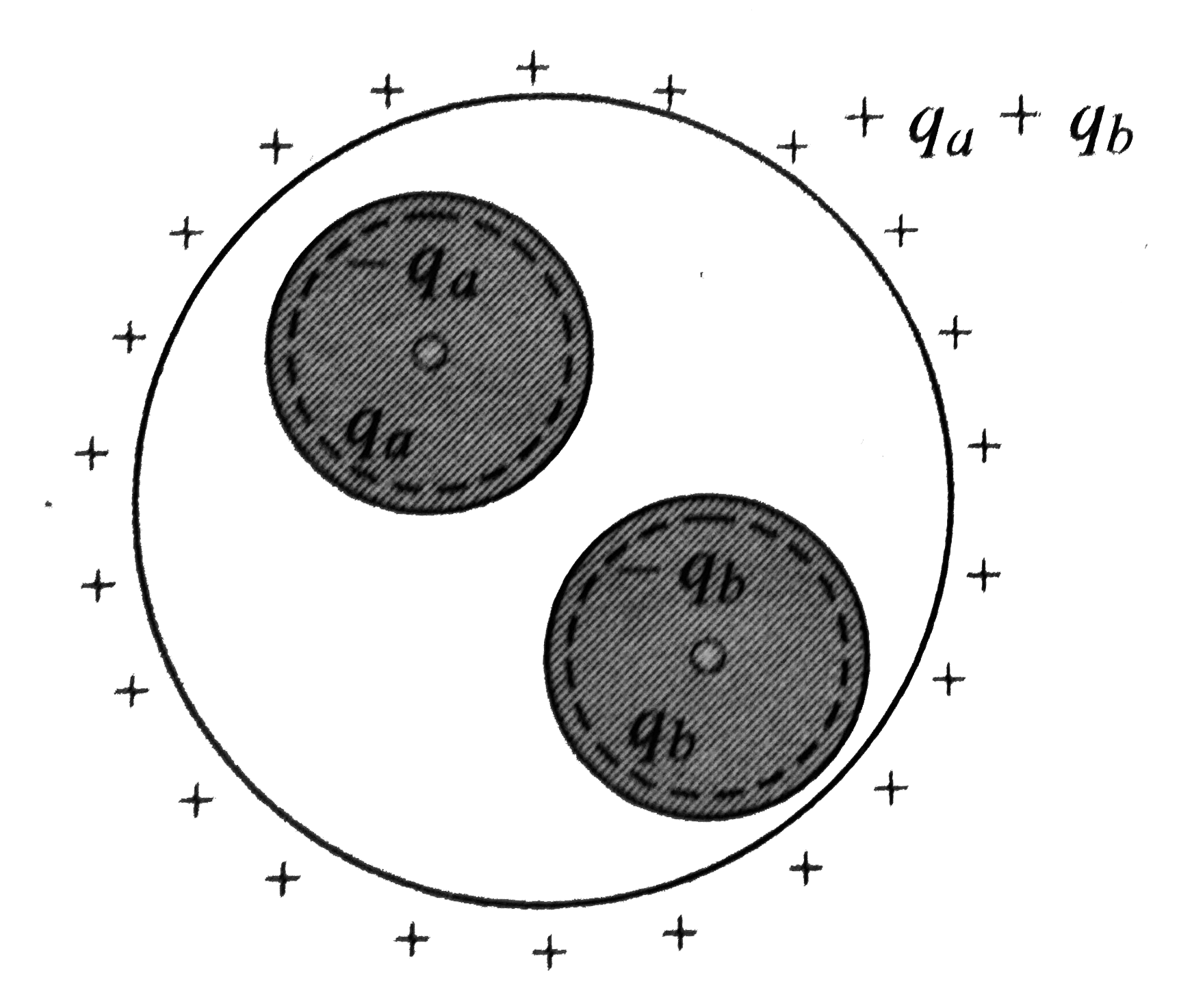
|
Updated on:21/07/2023
Related Playlists
- BOOK - CENGAGE PHYSICSCHAPTER - ELECTRIC FLUX AND GAUSS LAWEXERCISE - Subjective type7videos
ELECTRIC FLUX AND GAUSS LAW
- BOOK - CENGAGE PHYSICSCHAPTER - ELECTRIC FLUX AND GAUSS LAWEXERCISE - MCQ s38videos
ELECTRIC FLUX AND GAUSS LAW
- BOOK - CENGAGE PHYSICSCHAPTER - ELECTRIC FLUX AND GAUSS LAWEXERCISE - Multiple Correct8videos
ELECTRIC FLUX AND GAUSS LAW
- BOOK - CENGAGE PHYSICSCHAPTER - ELECTRIC CURRENT AND CIRCUITEXERCISE - Interger8videos
ELECTRIC CURRENT AND CIRCUIT
- BOOK - CENGAGE PHYSICSCHAPTER - ELECTRIC POTENTIALEXERCISE - DPP 3.514videos
ELECTRIC POTENTIAL
Knowledge Check
- Question 1 - Select One
Two spherical cavities of radii a and b are hollowed out from the interior of a neutral conducting sphere of radius R. At the center of each cavity , a point charge is placed . Call these charges qa and qb.
The electric field inside the cavity of radius a at a distance r from the center of cavity is
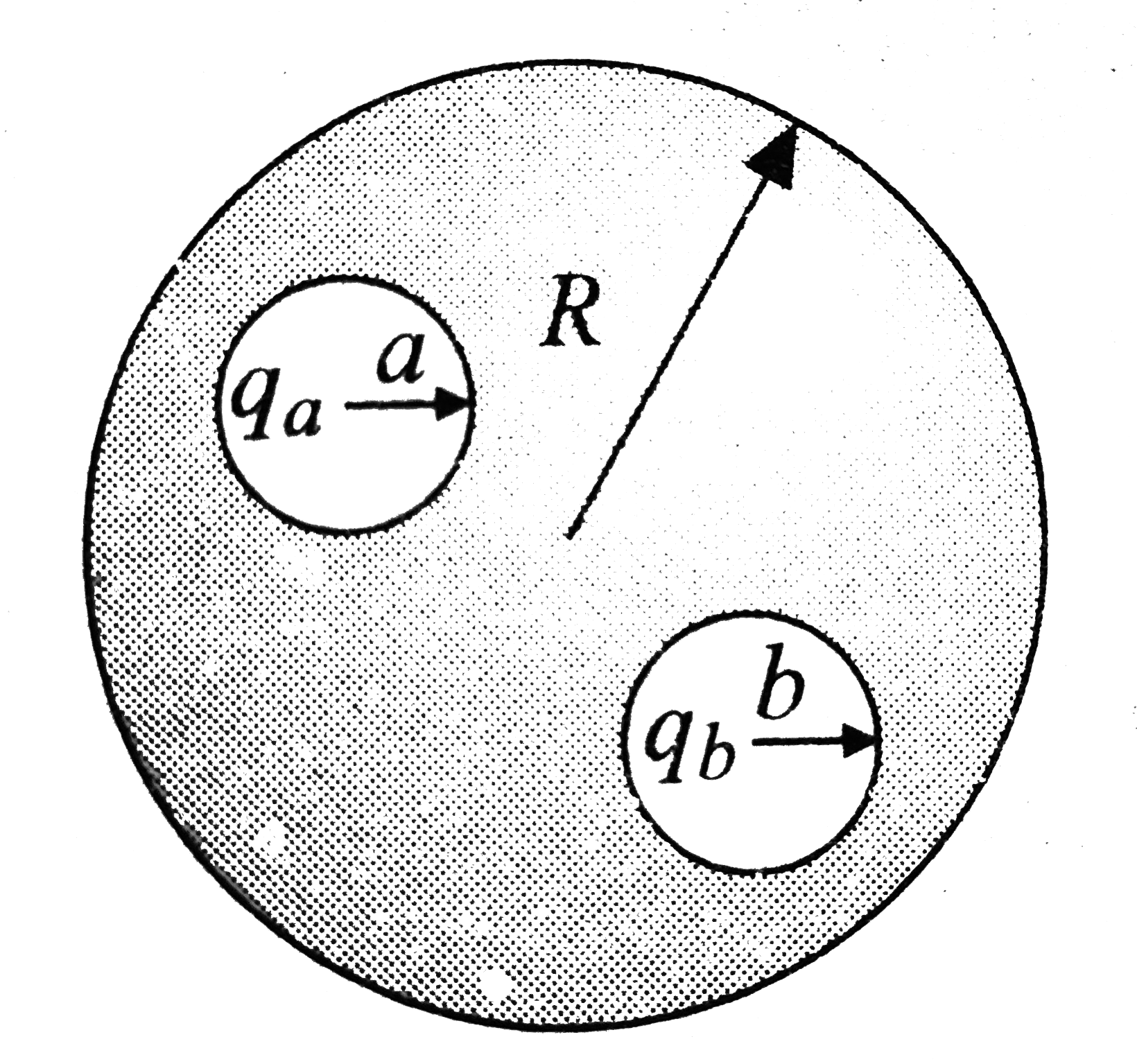 A14πε0qar2B14πε0qar2C14πε0qa+qbr2Dzero
A14πε0qar2B14πε0qar2C14πε0qa+qbr2Dzero - Question 1 - Select One
A conducting shell of radius R carries charge −Q. A point charge +Q is placed at the centre. The electric field E varies with distance r (from the centre of the shell) as
A B
B C
C D
D
- Question 1 - Select One
Potential at a point x-distance from the centre inside the conducting sphere of radius R and charged with charge Q is
AKQRBKQxCQx2DxQ - Question 1 - Select One
Two concentric hollow conducting spheres of radius r and R are shown. The charge on outer shell is Q. what charge should be given to inner sphere so that the potential at any point P outside the outer sphere is zero ?
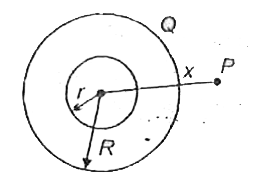 AQrRB−QRrC−QD−2QRr
AQrRB−QRrC−QD−2QRr - Question 1 - Select One
A spherical conductor A contains two spherical cavities as shown in Fig.2.127. The total charge on conductor itself is zero . However , there is a point charge q1 at the center of one cavity and q2 at the center of the other cavity . Another charge q3 is placed at a large distance r from the center of the spherical conductor.
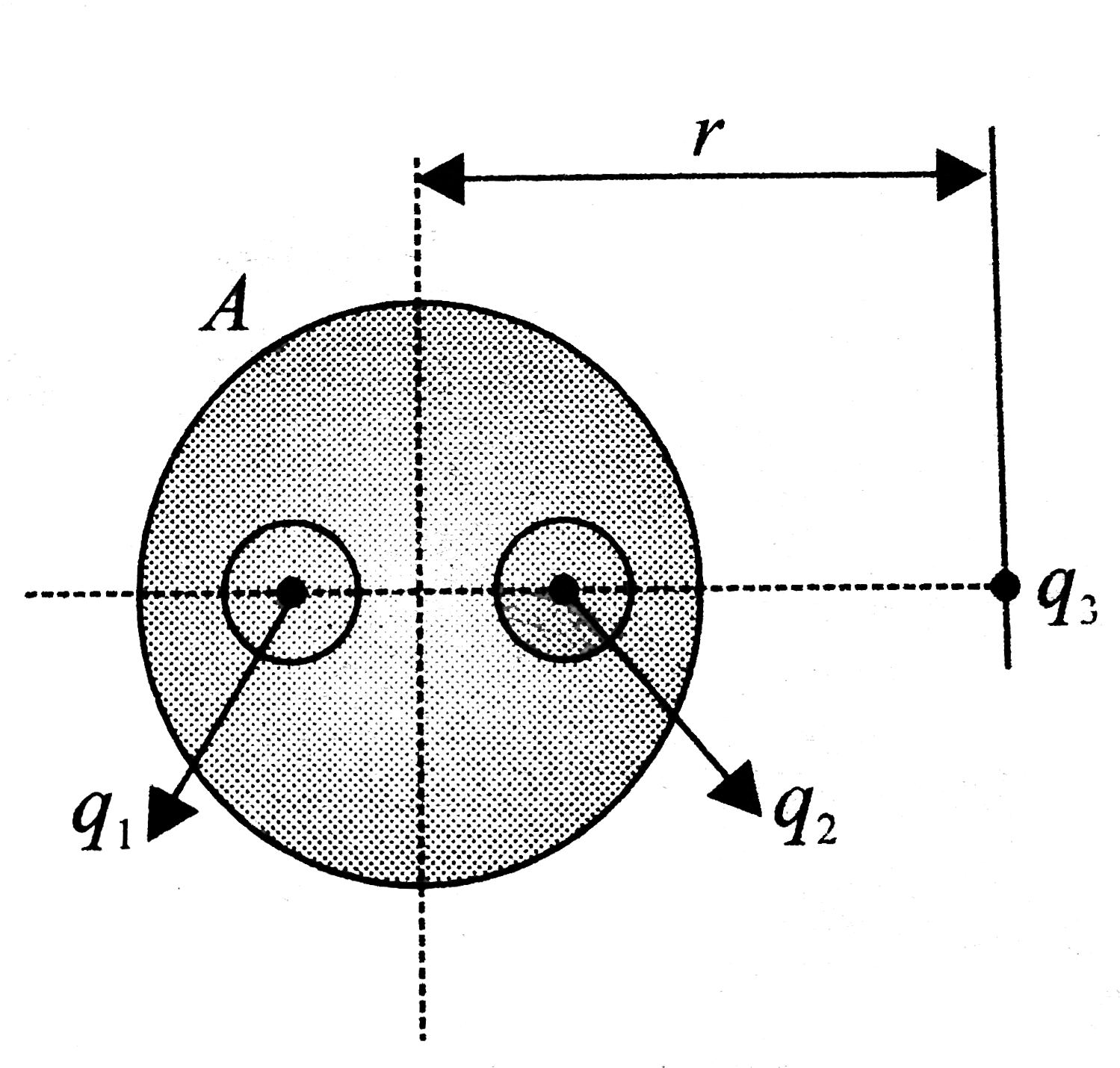
If q1 is displaced from its center slightly (being always inside the same cavity ), then the correct representation of field lines inside the same cavity isA B
B CThere will be no field lines inside the cavity.D
CThere will be no field lines inside the cavity.D
- Question 1 - Select One
A spherical conductor A contains two spherical cavities as shown in Fig.2.127. The total charge on conductor itself is zero . However , there is a point charge q1 at the center of one cavity and q2 at the center of the other cavity . Another charge q3 is placed at a large distance r from the center of the spherical conductor.

The force acting on conductor A will beAzeroBq3(q1+q2)4πε0r2C−q3(q1+q2)4πε0r2Dq3q1+q2q3+q1q24πε0r2 - Question 1 - Select One
The electric field intensity at a point located at distance r(r<R) from the center of a spherical conductor (radius R) charged Q will be-
AkQR/r3BkQr/R3CkQ/r2Dzero - Question 1 - Select One
A spherical conductor A contains two spherical cavities as shown in Fig. The total charge on conductor itself is zero . However , there is a point charge q1 at the center of one cavity and q2 at the center of the other cavity . Another charge q3 is placed at a large distance r from the center of the spherical conductor.
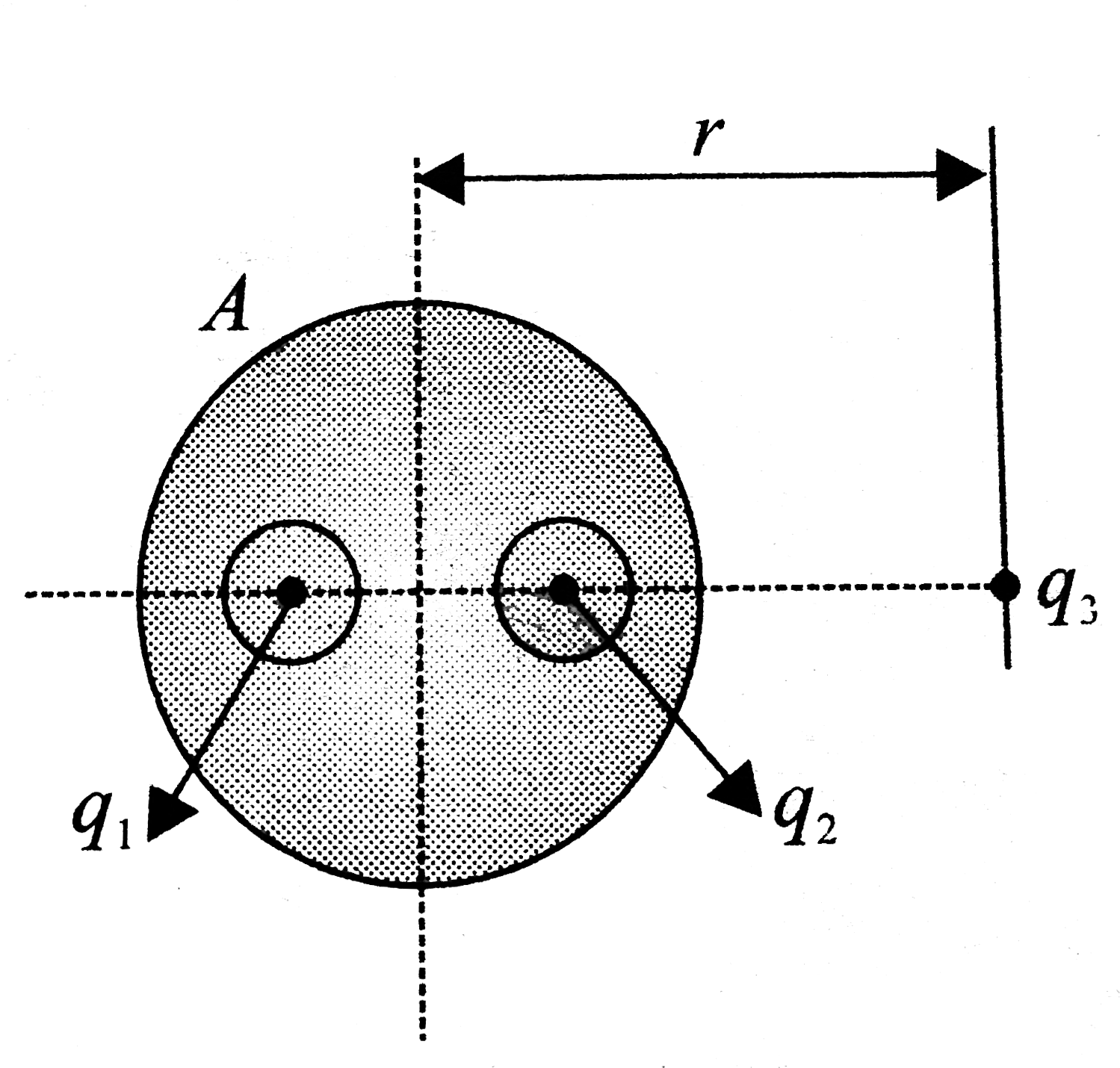
Which of the following statements are true ?ACharge q3 applies a larger force on the charge q2 than on charge q1.BCharge q3 applies a smaller force on the charge q2 than on charge q1.CCharge q3 applies equal force on both the charges.DCharge q3 applies no force on any of the charges.
Similar Questions
The centre of neutral conducting sphere of radius "R" is at distance 'd' from a point charge "Q" .The potential of the sphere is
View SolutionA spherical cavity of radius r is made in a conducting sphere of radius 2 r.A charge q is kept at the centre of cavity as shown in the figure.Find the magnitude of the total electric field at (4r 0) .
View Solution

